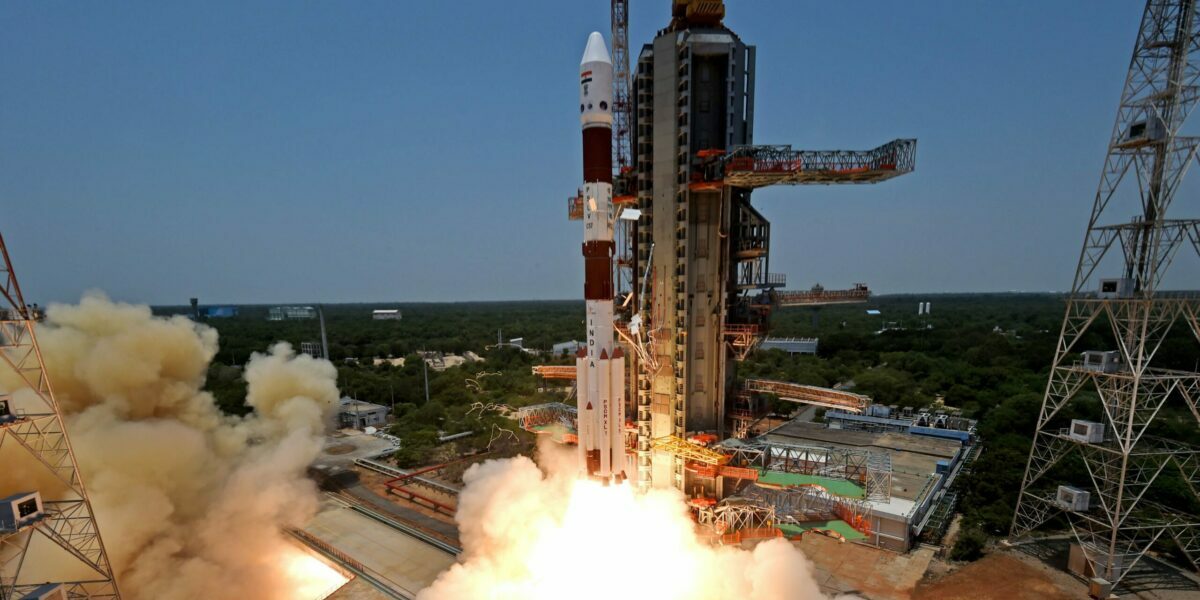According to ISRO, TCM ensures that the spacecraft is on its intended path towards the Halo orbit insertion around L1.
Published Oct 08, 2023 | 3:07 PM ⚊ Updated Oct 08, 2023 | 3:08 PM

Aditya L1 was launched on 2 September from Satish Dhawan Space Centre at Sriharikota in Andhra Pradesh. (ISRO/X)
The Indian Space Research Organisation (ISRO) said it performed a trajectory correction manoeuvre (TCM) on the Aditya L1 spacecraft, the country’s maiden solar mission.
“The Spacecraft is healthy and on its way to Sun-Earth L1. A Trajectory Correction Manoeuvre (TCM), originally provisioned, was performed on 6 October 2023, for about 16 s,” ISRO said on X on Sunday, 8 October.
TCM ensures that the spacecraft is on its intended path towards the Halo orbit insertion around L1.
“As Aditya-L1 continues to move ahead, the magnetometer will be turned on again within a few days,” the agency said.
Aditya-L1 Mission:
The Spacecraft is healthy and on its way to Sun-Earth L1.A Trajectory Correction Maneuvre (TCM), originally provisioned, was performed on October 6, 2023, for about 16 s. It was needed to correct the trajectory evaluated after tracking the Trans-Lagrangean…
— ISRO (@isro) October 8, 2023
It was needed to correct the trajectory evaluated after tracking the Trans-Lagrangean Point 1 Insertion (TL1I) manoeuvre performed on 19 September 2023, it added.
On 19 September, “Off to Sun-Earth L1 point! The Trans-Lagrangian Point 1 Insertion (TL1I) manoeuvre is performed successfully. The spacecraft is now on a trajectory that will take it to the Sun-Earth L1 point. It will be injected into an orbit around L1 through a manoeuvre after about 110 days,” ISRO posted on X.
Aditya-L1 is the first Indian space-based observatory to study the Sun from a halo orbit around the first Sun-earth Lagrangian point (L1), which is located roughly 1.5 million km from Earth.
Since its launch, Aditya-L1, during its journey around Earth, underwent four Earth-bound manoeuvres, on 3, 5,10 and 15 September, respectively, during which it gained the necessary velocity for its further journey to L1.
Upon arrival at L1, another manoeuvre took Aditya-L1 to an orbit around L1.
The satellite will spend its whole mission life orbiting around L1 in an irregularly-shaped orbit in a plane roughly perpendicular to the line joining Earth and the Sun.
Aditya-L1 is expected to arrive at the intended orbit at the L1 point after about 127 days, ISRO had said soon after the launch.
Imagine a small object, like a satellite, that has to be put at a specific spot in space where it can stay balanced under the gravitational influence of two larger objects, like the Earth and the Sun. This spot is called a “Lagrangian point.”
There are five Lagrangian points — L1 to L5 — in the Earth-Sun system. They are named after mathematician Joseph-Louis Lagrange, who found these points.
Aditya-L1 at L1 can continuously observe the Sun without being blocked by the Earth.
In simple terms, a Lagrangian point is a sort of cosmic “sweet spot” where an object can stay balanced between two larger objects’ gravitational forces.
A satellite placed in the halo orbit around the L1 point has the major advantage of continuously viewing the Sun without any occultation/eclipses, ISRO noted.
“This will provide a greater advantage of observing the solar activities and its effect on space weather in real-time,” it said.
Aditya L1 was successfully launched on 2 September from Satish Dhawan Space Centre (SDSC) in Sriharikota, in Andhra Pradesh.
“Our tireless scientific efforts will continue in order to develop a better understanding of the universe for the welfare of entire humanity,” he said on X after ISRO delivered the satellite into the intended orbit.
The Aditya-L1 payloads are expected to provide the most crucial information to understand the problems of coronal heating, coronal mass ejection (CME), pre-flare, and flare activities, and their characteristics, dynamics, and space weather.
The primary payload of Aditya-L1 the Visible Emission Line Coronagraph would be sending 1,440 images per day to the ground station for analysis on reaching the intended orbit.
(With PTI inputs)
